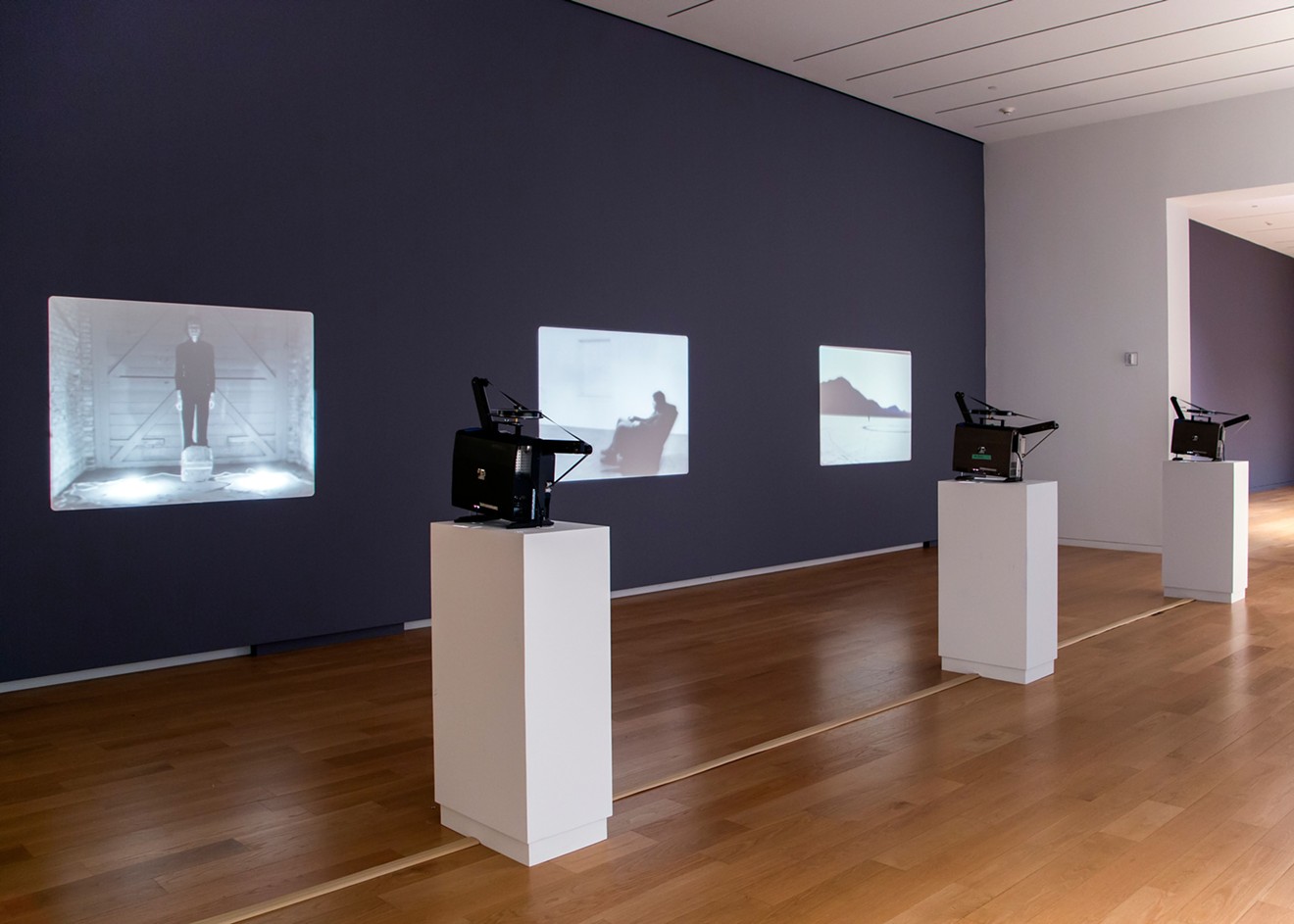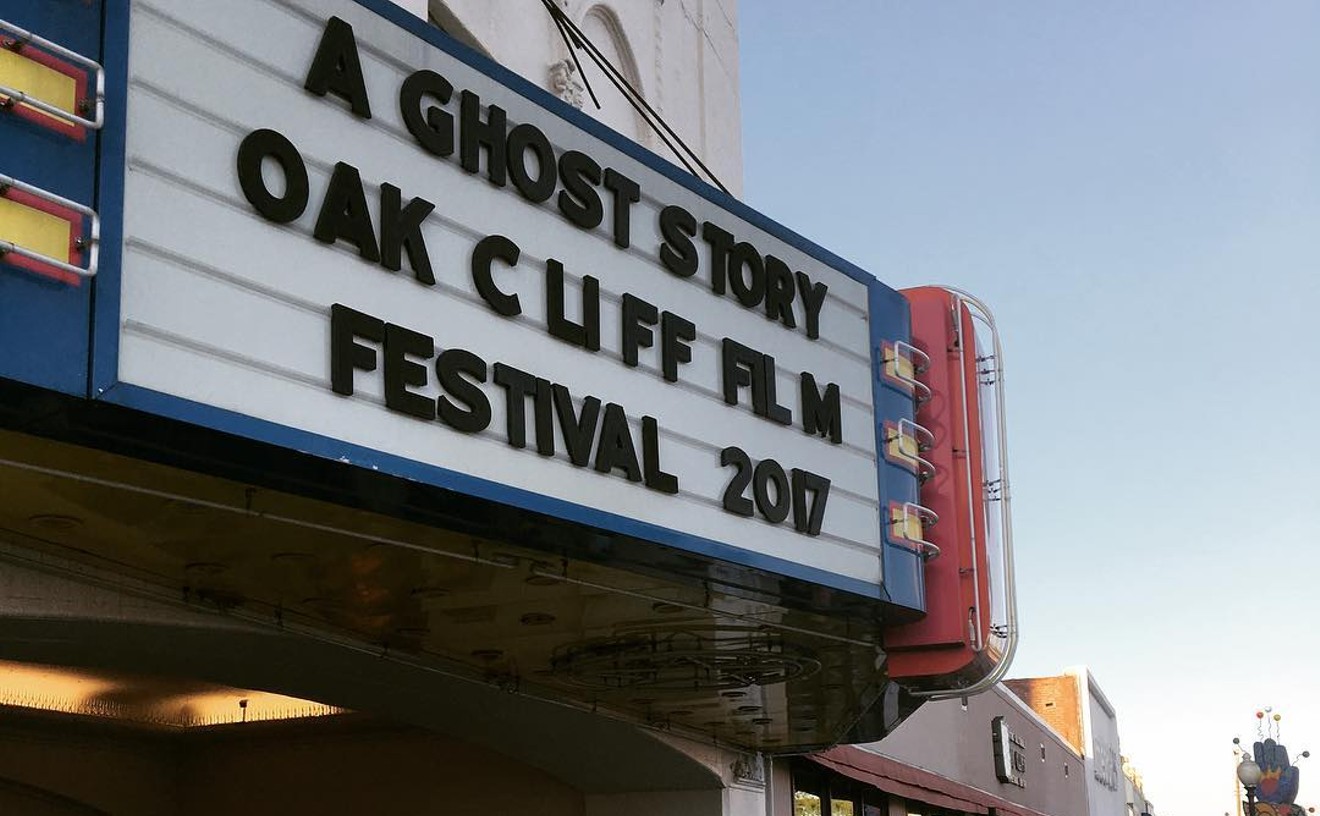In July 1975, when Dutch artist Bas Jan Ader waved goodbye from his sailboat, it would be the last time anyone would see him alive. Ader’s is one of three intersecting stories on display in Disappearing-California c. 1970, an exhibition running from May 10 through Aug. 11 at the Modern Art Museum of Fort Worth.
The documentation of Ader's journey as he crossed the Atlantic on his sailboat Ocean Wave was to be the next step in his series, In Search of the Miraculous. At the same time, in ‘70s-era California, artists Chris Burden and Jack Goldstein were making their own impressions in the art world, staging performance pieces that saw each artist disappearing or dying. Ader’s pieces, joined with the works of Burden and Goldstein, make up the examination of loss, withdrawal and the search for peace within both that is Disappearing-California.
Andrea Karnes, senior curator at the Modern, has put in long hours to make sure the exhibition is ready for the public on Friday. Showcasing three artists who largely expressed themselves within the realm of performance art can be challenging, but Karnes feels that the gallery contains a strong representation of the trio’s work.
“There’s actually a lot of objects,” Karnes says. “There’s a lot to see. We have some relics from past performances, we also have a lot of 16mm films of performances, and then we have some pieces in the show that weren’t performance-based, but that are object-based. The show is a mix of all of those things.”
Philipp Kaiser, the Swiss-born curator of Disappearing, collected pieces from each body of work, in cooperation with all three artists' estates. In Kaiser’s essay on the featured artists, "Whereabouts Unknown," he studies the trio of artists and what led them to delve similarly into the same themes at overlapping times.
“The exhibition Disappearing is, to an extent, a case study of a vernacular California conceptualism of the 1970s,” Kaiser wrote. “It focuses on an artistic moment, brings together the works of three notable artists, and asks the question: Why did these three white male artists make themselves disappear at precisely this point in time?”
"Why?" is the unanswerable question. Why did Burden — four years before Ader set sail on his fateful trip — disappear for three days, telling no one, including his wife, where he went? On Christmas Eve he returned and declared his absence and a new work of art, crafting an empty Plexiglas box labeled “DISAPPEARING. December 22-24, 1971,” to commemorate his performance piece. In a similarly morbid fashion, Burden’s 1972 Deadman found the artist covered in a tarp surrounded by road flares on La Cienega Boulevard in Los Angeles, causing pedestrians to report the “accident.”“A part of this exhibition really relates to the Vietnam War. ... That whole notion of wanting to disappear and maybe avoid the draft, or feeling like a dissident ...” — Andrea Karnes
tweet this
Was it the looming threat of death brought on by the Vietnam War that led Goldstein, the same year Burden lay prone under a tarp on La Cienega, to bury himself alive in a coffin equipped with a breathing tube? Friends and colleagues gathered together at sunset to bear witness to his burial, the only proof of life found in a red pulsing light representing his heartbeat.
“I always like to think of any period in art, and any art object — everything is related to its own history and culture,” Karnes says. “A part of this exhibition really relates to the Vietnam War, and I think that could be of interest, especially to visitors of a certain age. That whole notion of wanting to disappear and maybe avoid the draft, or feeling like a dissident and wanting to disappear for that reason.”
It’s an artistic cold case of sorts — three individuals, born no more than four years apart in three different countries, not implicitly influenced nor even aware of the other, all showcasing their own disappearance in California at the same time. Disappearing doesn’t necessarily look to provide easy answers, nor would it dare to simply categorize the cryptic creations of the three men — a presentation mixed with circumstance and personal demons.
Eventually all three men’s art would become reality. Burden passed away from cancer in 2013, and Goldstein’s long struggle to fight chemical dependency came to an end with his suicide in 2003. It’s a safe wager that even if the artists were here today to speak for themselves, to explain their motivations, the answers would remain without a firm conclusion. And while a clue into the artist's frame of mind would perhaps provide invaluable insight into the anxieties caused from a changing America, it is unnecessary, as their work and lives, now immortalized at the Modern Art Museum of Fort Worth, speak loudly for them.











